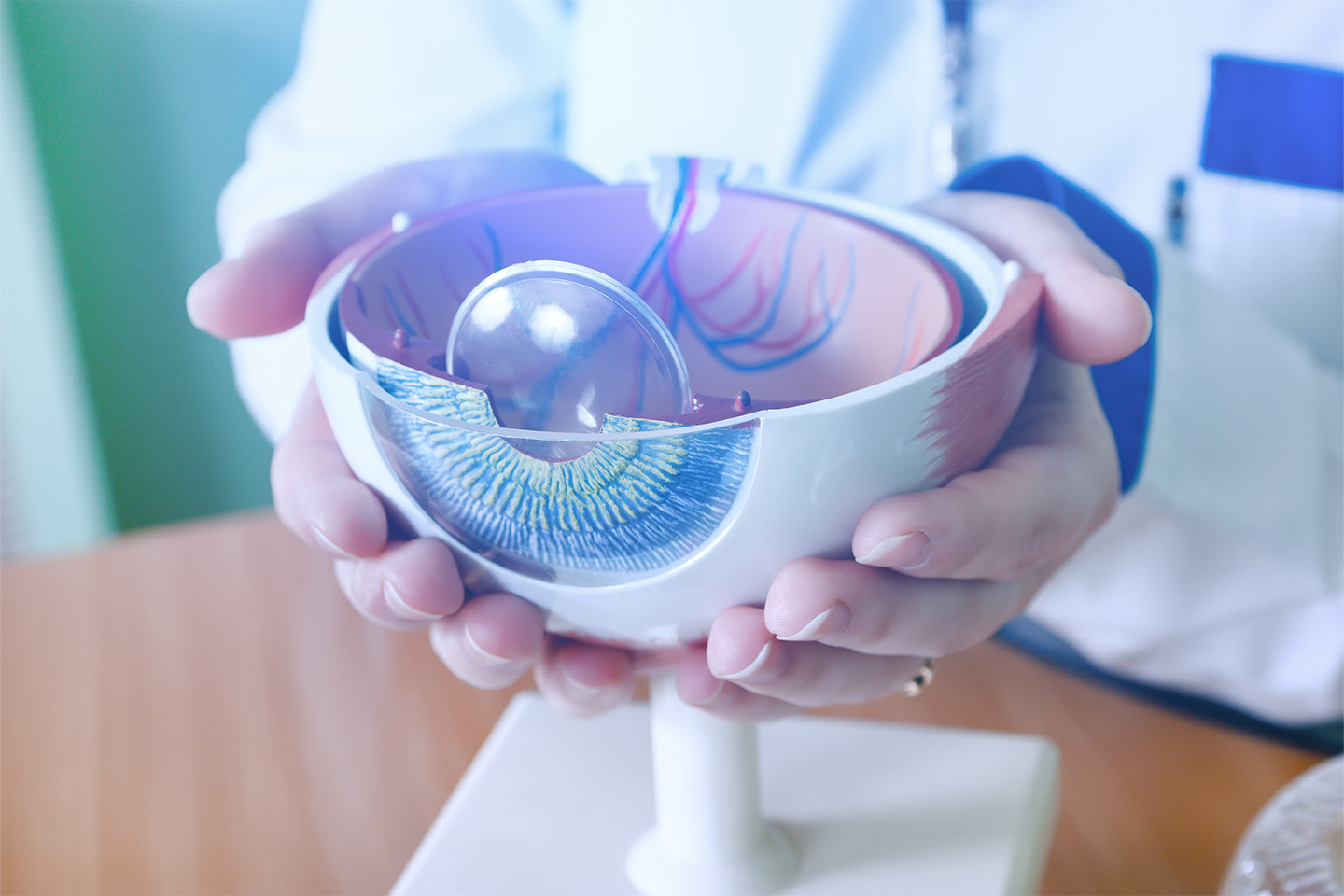What Patients Need to Know about Keratoconus

On its surface, keratoconus looks a lot like astigmatism. Here are the common risk factors, symptoms, and treatment options for people with the condition.
You may already know that the surface of the eyeball – called the cornea – normally has a spherical shape. Eyeballs’ roundness helps us accurately form and focus images, so it’s important that eyes stay round.
Unfortunately, corneas can sometimes change shape. Most commonly, they can become more ovular or football-shaped. When that happens, it’s called astigmatism, and procedures such as LASIK can help correct it.
However, in some rare cases, the eye can develop keratoconus, where the cornea becomes shaped more like a traffic cone than a football. Like astigmatism, keratoconus makes it hard to properly focus images and to see clearly. Unlike astigmatism, though, keratoconus can’t typically be treated with LASIK or similar procedures.
Risk Factors for Developing Keratoconus
Doctors have not found a definitive cause for keratoconus. Some tenuous links have been established with allergies, frequent eye-rubbing, a history of poorly-fitted contact lenses, and ultraviolet light. There may also be a genetic component, as the condition is associated with a number of heritable disorders.
Symptoms of Keratoconus
Keratoconus shares symptoms with other common eye conditions, at least to the patient. People who are eventually diagnosed with the condition usually go to the eye doctor complaining of blurred vision and asking for glasses or contacts lenses for reading or driving. Eventually, though, patients develop the classic keratoconus symptom: “ghost images,” or seeing multiples of the same image at the same time.
Keratoconus typically affects both eyes, although one eye is usually more severe than the other. Many patients also complain of light sensitivity, itching eyes, and eyestrain from frequent squinting.
Treatments for Keratoconus
There are two primary treatments for keratoconus: corrective lenses or surgery. Initially, when the condition is still mild, normal soft contact lenses or glasses can correct the visual deficits. As the disease progresses, those lenses will need to be switched out for rigid, gas-permeable lenses. These lenses allow a bubble of tears to form between the eye and the lens, which simulates the shape of a normal eyeball.
In more severe cases, corrective lenses likely won’t be effective, leaving surgery as the only remaining option. The most common surgical procedure is a corneal transplant, in which the patient’s irregularly-shaped cornea is replaced with a tennis ball-shaped cornea from a donor. If a donor cornea is not available, the surgeon may use a corneal ring implant, which is a device that can help change the curvature of the eye.
If you’re concerned that you or a loved one might have keratoconus, don’t delay. Take action today and contact Kleiman Evangelista Eye Centers of Texas to schedule an appointment and learn more about your options.
Turn To The Top Eye Doctors In Texas
Check out one of our locations below for the best eye care near you:
[DISPLAY_ULTIMATE_SOCIAL_ICONS]








